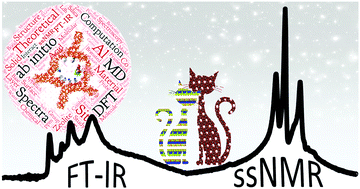Combined solid-state NMR, FT-IR and computational studies on layered and porous materials†
Abstract
Understanding the structure–property relationship of solids is of utmost relevance for efficient chemical processes and technological applications in industries. This contribution reviews the concept of coupling three well-known characterization techniques (solid-state NMR, FT-IR and computational methods) for the study of solid state materials which possess 2D and 3D architectures and discusses the way it will benefit the scientific communities. It highlights the most fundamental and applied aspects of the proactive combined approach strategies to gather information at a molecular level. The integrated approach involving multiple spectroscopic and computational methods allows achieving an in-depth understanding of the surface, interfacial and confined space processes that are beneficial for the establishment of structure–property relationships. The role of ssNMR/FT-IR spectroscopic properties of probe molecules in monitoring the strength and distribution of catalytic active sites and their accessibility at the porous/layered surface is discussed. Both experimental and theoretical aspects will be considered by reporting relevant examples. This review also identifies and discusses the progress, challenges and future prospects in the field of synthesis and applications of layered and porous solids.



 Please wait while we load your content...
Please wait while we load your content...